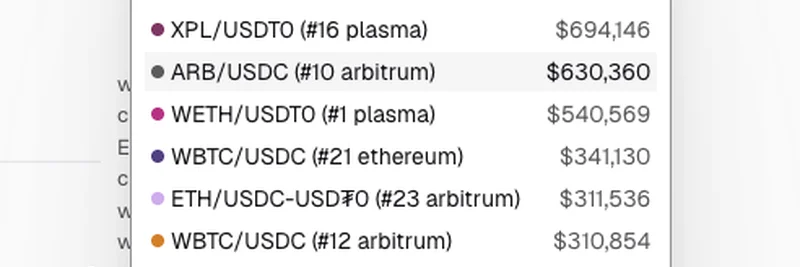In the fast-paced world of decentralized finance (DeFi), liquidations are a key mechanism to keep lending platforms stable. For those new to the term, a liquidation happens when a borrower's collateral value drops below a certain threshold due to market price changes, forcing the protocol to sell off assets to repay the loan. This prevents bad debt from piling up. Recently, a thread on X (formerly Twitter) from researcher @0xnoveleader shed light on some eye-opening stats from October 10, 2025, highlighting how major protocols handled a wave of liquidations.
The data, pulled from dashboards on Dune Analytics, shows a total of around $260 million in liquidations across four big players: Aave, Morpho, Fluid, and Euler. Aave, one of the oldest and most established lending protocols, took the lion's share with $192.71 million. Morpho followed at $46.19 million, Fluid at $17.37 million, and Euler at $4.32 million. These numbers come amid what seems to be a bout of market volatility, possibly triggered by broader crypto price swings.
What's even more interesting is putting these liquidations in context with the total borrowed amounts on each platform. According to the thread, Aave had $28.98 billion in borrowed assets, making the liquidations just 0.66% of that figure. Morpho, with $4.14 billion borrowed, saw a higher relative impact at 1.11%. Fluid's $2.16 billion in borrows equated to 0.8% liquidated, while Euler's $1.97 billion was only 0.22%. This suggests that while Aave handled the most in absolute terms, newer protocols like Morpho might be feeling the heat more proportionally.
The thread credits some "chad dashboards" for the insights—shoutout to creators like @0xsandeshk for liquidations overview (Dune dashboard), @dknugo for Fluid specifics (Dune dashboard), and @0xpibs for Euler data (Dune dashboard). These tools are gold for anyone tracking DeFi metrics in real-time.
This discussion kicked off in response to @litocoen, who noted surprise at the relatively low liquidation volumes given over $30 billion in active loans across these platforms. It's a reminder that DeFi's risk management systems are holding up, but volatility can still catch users off guard. For meme token enthusiasts, this matters because many speculative assets are used as collateral in these protocols— a sharp drop in a hype-driven token could trigger cascading liquidations.
If you're diving deeper into how these protocols work, check out the comprehensive report from Castle Labs (thread link). It breaks down the core architecture of these money markets, which now hold around $80 billion in assets, marking DeFi lending as the sector's biggest vertical.
Staying informed on these stats can help blockchain practitioners spot trends early. Whether you're borrowing for leverage on meme plays or just watching the market, understanding liquidations is crucial to navigating DeFi safely. Keep an eye on those collateral ratios!


